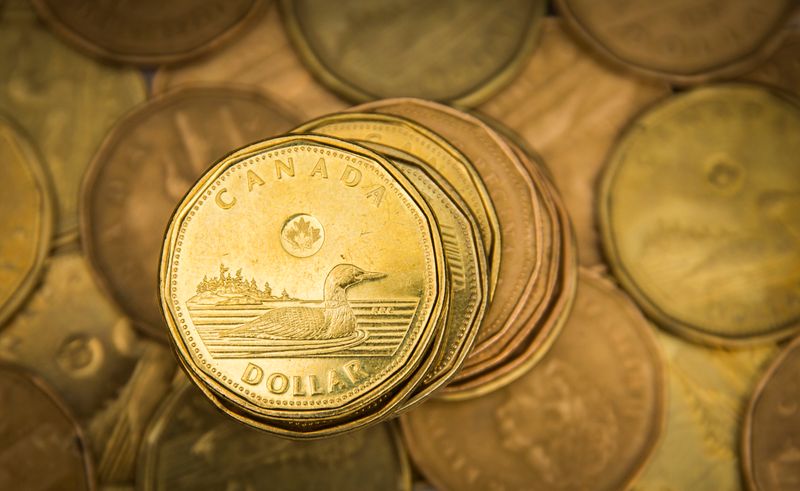TORONTO (Reuters) – The Canadian dollar strengthened against its U.S. counterpart and the other G10 currencies on Tuesday, as oil prices climbed to a one-year high and the prospect of more U.S. economic stimulus bolstered risk appetite.
Major U.S. stock indexes climbed as Democrats in Congress prepared to take the first steps toward fast-track passage of President Joe Biden’s $1.9 trillion COVID-19 relief package and new cases of COVID-19 in the United States fell for a third week in a row.
New cases in Canada have also declined in recent weeks. Canada has signed its first deal to allow a foreign coronavirus vaccine to be manufactured domestically, Prime Minister Justin Trudeau said.
“We’re seeing a broad-based rally in risk appetite today … which is boosting the value of the loonie,” said Scott Smith, managing partner at Viewpoint Investment Partners.
Canada runs a current account deficit and is a major exporter of commodities, including oil, so the loonie tends to be sensitive to the global flow of trade and capital.
U.S. crude oil futures settled 2.3% higher at $54.76 a barrel after major crude producers showed they were reining in output roughly in line with their commitments.
The Canadian dollar strengthened 0.3% to 1.2807 per greenback, or 78.08 U.S. cents, having traded in a range of 1.2781 to 1.2869.
The only other G10 currency to gain ground against the U.S. dollar was the Swedish crown. It was up 0.1%.
“The USD is broadly stronger against the majors illustrating today’s move is more about the loonie,” Smith said.
Canada’s employment report for January is due on Friday, which could help guide Bank of Canada interest rate expectations.
Canada’s 10-year yield rose 2.7 basis points to 0.910%, approaching the 10-month high it touched on Friday at 0.922%.
(Reporting by Fergal Smith; Editing by Paul Simao and Peter Cooney)






















